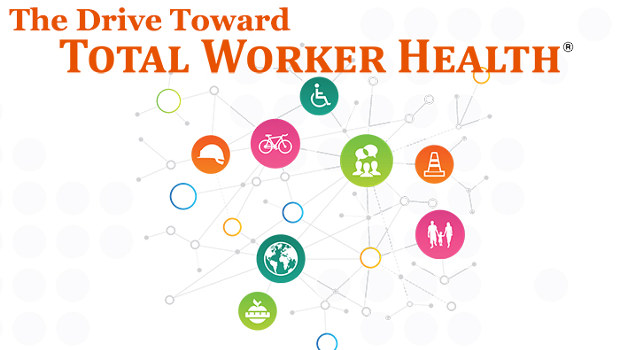Total Worker Health®: Integrating workplace safety and employee wellness

image via The Center for Occupational & Environmental Health, Berkeley
In Annals of Internal Medicine, Dr. Grossman and colleagues set a course for research on integrated approaches to keeping workers safe and healthy.
by David Grossman, MD, MPH, Group Health Research Institute Senior Investigator and Group Health Pediatrician and Executive Medical Director, Population & Purchaser Strategy, Health Plan
For the past few months, I’ve been working with a National Institutes of Health (NIH) expert panel to answer an important question: How do we develop a robust, evidence-based approach to improving workplace health and well-being?
Convened as part of the NIH Pathways to Prevention (P2P) program, the panel met for a two-day workshop on Total Worker Health®—a new approach to promoting employee health that combines health promotion and occupational safety. We reviewed the existing scientific evidence on integrating worker health promotion with worksite safety. And in a report published yesterday in the Annals of Internal Medicine, we shared eight recommendations for research to develop Total Worker Health® as a promising strategy for improving worker safety and health.
According to the Bureau of Labor Statistics, nearly 4,700 workers were killed on the job in 2014, while nearly 3 million suffered from a work-related injury or illness. But that’s only part of the story. Studies show that workers with chronic health conditions are more likely to experience a safety incident or injury on the job. In addition, the average cost of workers’ compensation goes up for employees with comorbid conditions.
The exciting thing about an integrated approach like Total Worker Health is that it takes into account this whole picture, recognizing that work impacts health and health impacts work. Addressing workplace safety and worker well-being gives us an opportunity to do more than just prevent workplace injuries and deaths—we can also help prevent and manage chronic conditions that reduce worker productivity and life expectancy.
To learn more about the panel’s recommendations for research that will move the needle forward on workplace safety and employee well-being, check out our report in Annals: National Institutes of Health Pathways to Prevention Workshop: Integrated Interventions for Improving Total Worker Health®.
Dr. Grossman’s co-authors and fellow members of the P2P expert panel on Total Worker Health are Susan J. Curry, PhD, Dean of the University of Iowa College of Public Health (panel and workshop chair); Cathy J. Bradley, PhD, of the Department of Health Systems, Management, and Policy at the University of Colorado Comprehensive Cancer Center; Rebecca A. Hubbard, PhD, of the Department of Biostatistics and Epidemiology and Center for Clinical Epidemiology and Biostatistics at the University of Pennsylvania Perelman School of Medicine; and Alexander N. Ortega, PhD, of the Department of Health Management and Policy and Center for Population Health and Community Impact, at the Drexel University Dornsife School of Public Health.


